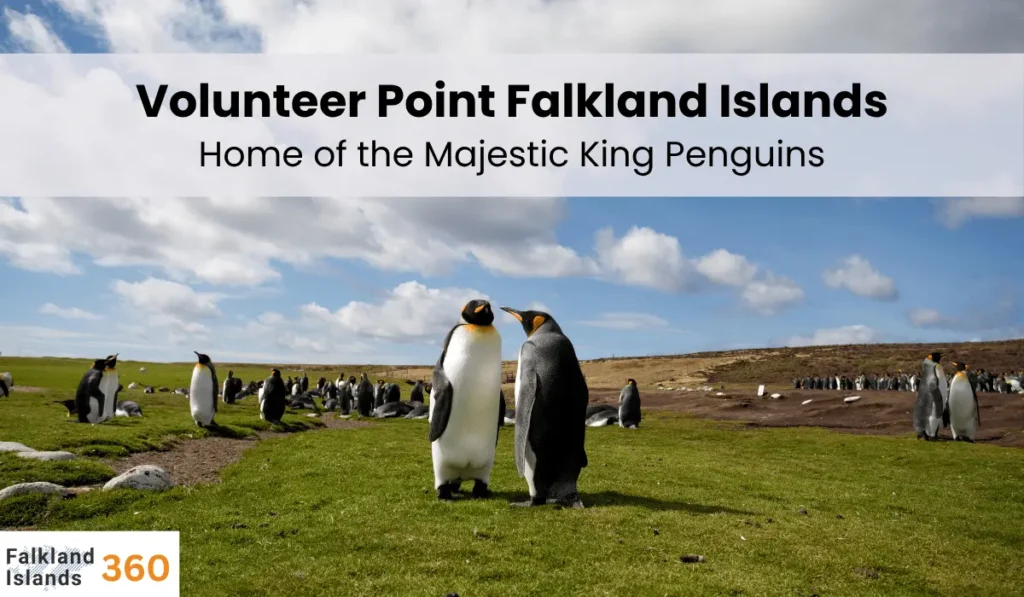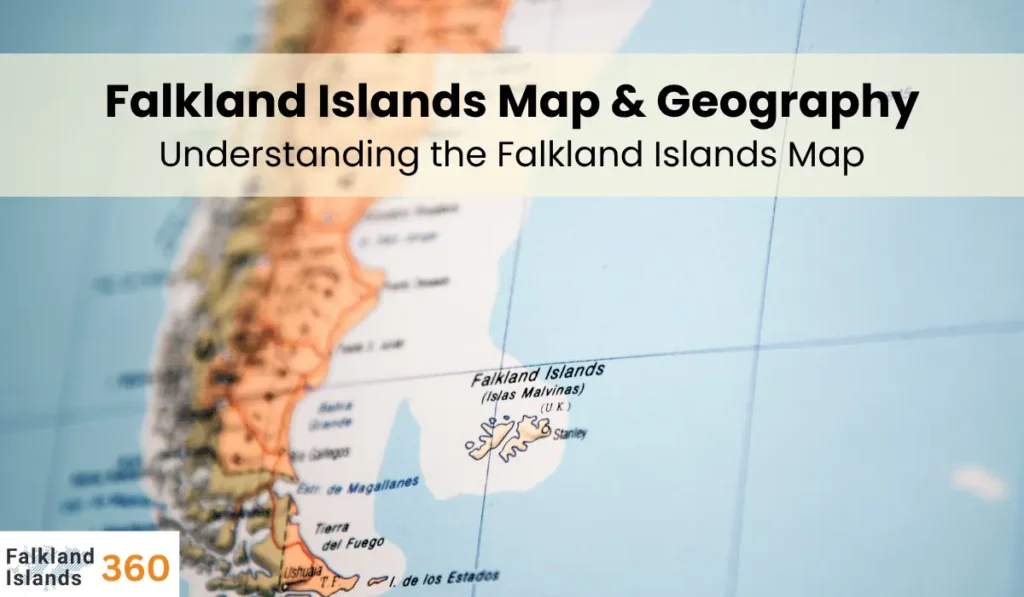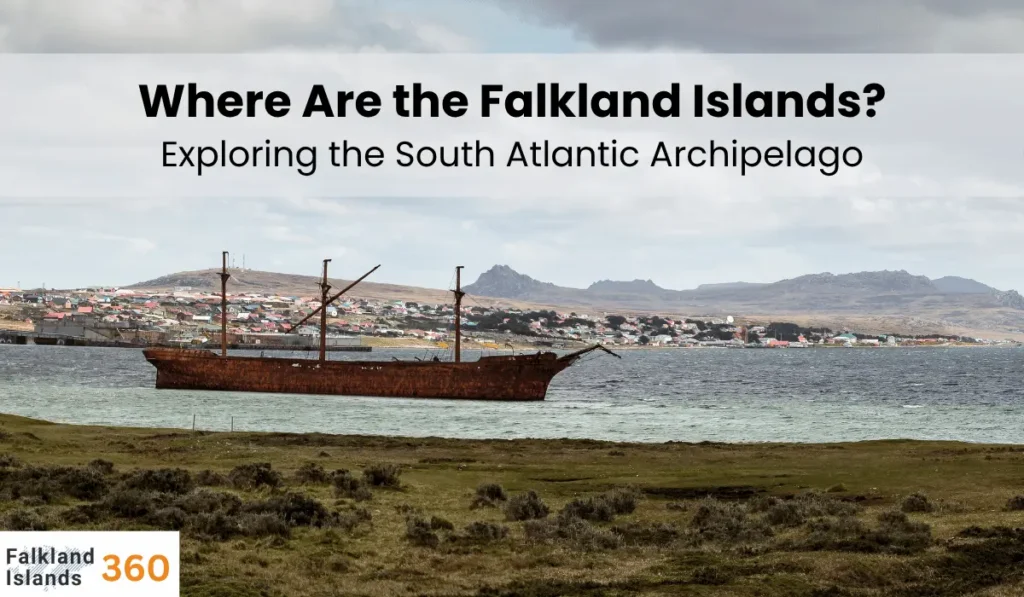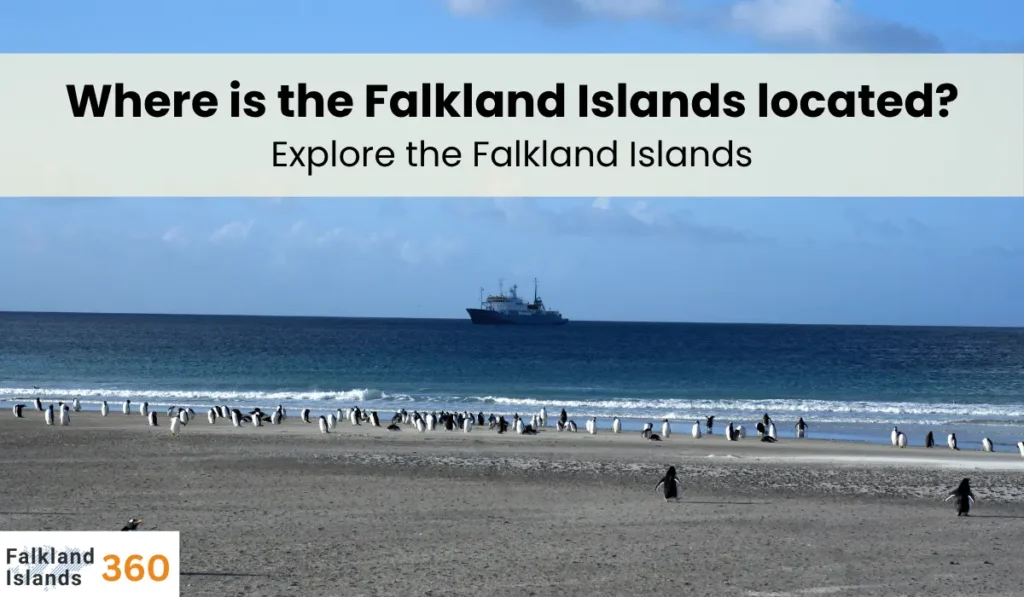Volunteer Point is a windswept peninsula on East Falkland, a remote island in the South Atlantic. It lies about 50 miles northeast of Stanley, the capital of the Falkland Islands. The peninsula has a long white-sand beach and dunes that attract all kinds of wildlife.
But its claim to fame is the thousands of King Penguins that gather on that beach. In fact, Volunteer Point Falkland Islands hosts the islands largest king penguin colony. Visitors describe the sight as awe-inspiring: a beach alive with tuxedoed penguins calling and moving in unison.
Volunteer Point & King Penguins
Nearly the entire Falklands population of King Penguins lives here. Falklands Conservation notes that about 1,500 breeding pairs (around 3,000 adult penguins) nest at Volunteer Point. Cruise guides similarly report roughly 1,200 adults plus many chicks on the beach at any time, calling it the largest colony of king penguins in the world outside of South Georgia Island.
In recent surveys, about 944 King Penguin chicks were counted in a season. The highest number recorded since monitoring began in 1980. Together with Gentoo and Magellanic penguins, the place feels like a living wildlife sanctuary.
King Penguins are striking birds. They stand nearly one meter tall and can weigh over 12 kg. Their smooth plumage is black and white, with bright yellow-orange patches on the head and chest. These are large, curious penguins and seem completely unafraid of human visitors.
In summer months (roughly December–February in the Southern Hemisphere), many chicks mingle with adults on the beach. King Penguins have a very long breeding cycle (about 14 months), so each pair produces roughly two chicks every three years. At Volunteer Point, parents exchange duties caring for eggs and chicks while other birds forage at sea.
Volunteer Point is not only about kings. It’s officially a National Nature Reserve and an Important Bird Area, because of all the seabirds and wildlife there. Thousands of Gentoo Penguins (around 1,000 pairs) and Magellanic Penguins (several thousand) nest here too. In fact, surveys recorded about 3,600 Gentoo pairs and 2,500 Magellanic pairs at the site.
The cacophony of bird calls is constant: a natural guidebook even notes “a cacophony of sounds” greets visitors from the King, Gentoo and Magellanic colonies. Other wildlife includes Falkland steamer ducks, geese, terns and cormorants around the lagoon. On nearby coasts, Southern sea lions and elephant seals haul out, and sometimes whales can be spotted offshore. With so much wildlife, it’s important to respect the rules: stay on marked paths, give animals space, and never feed or chase the penguins or other birds.
Getting There & Accommodations
Volunteer Point lies within Johnson’s Harbour Farm, a working sheep ranch on East Falkland. It’s private land, so visitors must obtain permission from the owners before going – usually arranged via a tour operator or the Volunteer Point office. The classic way to get there is by road from Stanley. Plan on a full half-day: the farm track is mostly gravel, and the final 4×4 section is bumpy and rough. One travel guide explains that after the gravel road ends, “the real adventure begins” over grassy trails, streams and potholes until you finally reach the beach. A round-trip 4×4 ride takes roughly 2½–3 hours. (Some visitors also arrive by light aircraft or helicopter, but these must be arranged in advance.)
Most travelers take a day-trip from Stanley, though it’s possible to stay overnight. Volunteer Point has a small lodge called the Volunteer House – the warden’s old home – that can host up to four guests. This rustic accommodation includes all meals, and the beach is just a short walk away. Waking up to the penguins on your doorstep is truly unique. (If you stay, you’ll share the coast with about 3,000 King Penguins and many more gentoo and magellanic penguins.)
Visiting Tips for Volunteer Point Falkland Islands
- Permission is required. Arrange access via an official tour operator or Volunteer Point contact, since this reserve is on private land. The track is impassable if wet, so visits usually happen in dry weather.
- Travel by 4×4 or guided tour. Hire a sturdy vehicle in Stanley (many tours include Volunteer Point). Bring a driver comfortable with gravel and grass roads.
- Dress warmly. Falklands weather is cold, windy and changeable. Wear windproof, waterproof layers, a hat and sturdy boots. Even summer days can feel chilly.
- Time your visit. The summer months (November through February) are best for wildlife. This is when most penguins are in breeding mode and chicks are on the beach. The long daylight hours (16+ hours in Dec) give plenty of time for exploration.
- Wildlife etiquette. Keep at least a few meters from all animals. King Penguins and other seabirds are protected – don’t touch or feed them, and stick to marked trails. If you quietly sit or stand still, the penguins often continue their normal activities.
- Photography. Binoculars and a camera with zoom are must-haves. The animals are curious but do stay a respectful distance (usually around 5–10 meters in tours). Better to get portraits from afar than risk scaring the wildlife.
Wildlife to See in the Falkland Islands
Besides the penguins, Volunteer Point offers many birdwatching highlights. The lagoon behind the beach is a good spot to see Falkland steamer ducks, oystercatchers and terns. Overhead or on the beach one might glimpse Southern Giant Petrels and caracaras. Keep an eye out for sea lions sunning on rocks just offshore – males can be noisy bulls. In late summer, migrating whales (humpback or southern right) sometimes pass by. The wide open views of tussock grass and the Atlantic make for breathtaking scenery. For photographers and nature lovers, the close encounters with King Penguins and their colorful cousins are often “life-changing” moments.
Conclusion
Volunteer Point is a bucket-list destination for wildlife lovers. Few places on earth allow such close views of large King Penguin colonies. It feels like stepping into a nature documentary: penguins parade up the beach, chicks waddle in crèches, and seabirds wheel overhead against the backdrop of the South Atlantic.
Despite the adventure to get there, most visitors agree it’s worth every bump in the road. As one guidebook puts it, seeing so many penguins in this wild setting is “a truly unusual opportunity”. Whether you come on a cruise stop, a guided tour, or stay at the Volunteer House, the memory of those orange-billed, gold-crested penguins will stay with you long after you leave.
Frequently Asked Questions
Where is Volunteer Point?
It’s on the northeast coast of East Falkland (Falkland Islands), near Johnson’s Harbour. The site is about 80 km (50 miles) northeast of Stanley, the island capital.
Why is Volunteer Point famous?
It’s home to the Falklands’ largest King Penguin colony. Thousands of King Penguins (plus many Gentoo and Magellanic penguins) nest on its white sand beach, creating an unforgettable wildlife spectacle.
How do I visit Volunteer Point?
Access is by 4×4 vehicle (or helicopter) from Stanley. Tours often include Volunteer Point as a full-day trip. Remember you need landowner permission, so use a licensed operator or contact Volunteer Point in advance.
When is the best time to see King Penguins?
The summer season (roughly November to February) is ideal. That’s when most adults are tending nests or chicks, and the long daylight means you can spend hours watching the penguins.
Can visitors stay overnight?
Yes. There is a small on-site lodge (Volunteer House) with very limited rooms. Guests get all meals and direct beach access. It must be booked well in advance and fills up quickly in summer.




